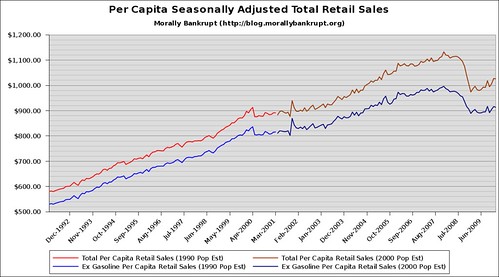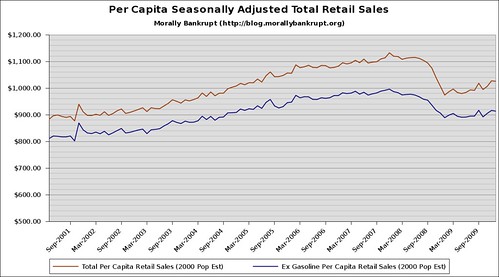Futures, forwards, options, swaps; no matter what you call them they fall under one broader label: derivatives. Derivative products, like their name indicates, are products where the return is derived from another instrument. While credit-default swaps have been the most prominent in the news during the The Panic of '08/'09, they are not much different from the rest in one fundamental way: they are a zero-sum game. By zero-sum game, I mean a situation where net losses must always equal net gains. In particular, I am going to talk about options. Today I'm going to illustrate this with options.
For our example, we are going to use a call option sold on Conglomerate A Inc., for expiration in July 2009 at a strike price of $10 and at a cost of $1. That means that the purchaser will have the right to buy from the seller 100 shares of Conglomerate A Inc., for $10 a share until July 2009 if they pay the seller $100 today. If you think that Conglomerate A Inc, is going to be worth $15 in July, you can buy this call option and, if you are right, you'll be able to buy 100 shares at $10 in July and sell then in the open market for $15, netting a cool $400 (remember, you paid $100 for the option). The seller, on the other hand, was obligated to sell you his shares at a discount and lost $400. There is many ways this can play out, but one things is sure, for every dollar a person makes, another person loses a dollar.
I have no problem with options, in fact, I frequently use them to manage volatility and risk, but that doesn't change the facts. For every dollar someone gains, someone else loses $1. This would all be well and good, but every investor knows that, even though they don't exist in economics textbooks, transaction costs are very real in the form of ticket charges and/or commissions. Let's now play out the same scenario under a more realistic setting:
- John writes 10 Conglomerate A Inc. calls with a $10 strike price at $1 for gross proceeds of $1,000. After paying a $25 ticket charge and $1 per contract fee, the net proceeds to John's account are $965.
- Daphne is very bullish in Conglomerate A Inc. and wants a leveraged play, but wants to limit her losses, so she buys the 10 calls for $1000 plus $35 in transaction costs for a total of $1035 net cash outflow.
- Daphne is spot-on and the share price of Conglomerate A Inc., rises to $15. She exercises the option, buying the shares from John for a total of $10,000 (1 contract = 100 shares) and immediately sells the in the open market for $15,000, netting her a handsome profit of $3965 after factoring in the $1035 paid for the option and fees.
- John, unfortunately, had to sell the shares at a loss of $5000, minus the $965 he received for the option, leaving him with a net loss of $4035.
- Daphne made $3965, and John lost $4035. This is a zero-sum game, so where did the other $70 go? To your broker dealer. The financial industry facilitated this exchange for you, at no risk, and made $70, or 7% of your total transaction.
After fees, we have a less than zero-sum game, meaning your probability-adjusted payout is negative from the beginning. Remember that the next time you buy or sell options.


